Spring Cannot be Cancelled: David Hockney in Normandy
£12.20£16.10 (-24%)
‘A burst of springtime joy’ Daily Telegraph
‘A springboard for ideas about art, space, time and light’ The Times
‘Lavishly illustrated’ Guardian
David Hockney reflects upon life and art as he experiences lockdown in rural Normandy
On turning eighty, David Hockney sought out rustic tranquility for the first time: a place to watch the sunset and the change of the seasons; a place to keep the madness of the world at bay. So when Covid-19 and lockdown struck, it made little difference to life at La Grande Cour, the centuries-old Normandy farmhouse where Hockney set up a studio a year before, in time to paint the arrival of spring. In fact, he relished the enforced isolation as an opportunity for even greater devotion to his art.
Spring Cannot be Cancelled is an uplifting manifesto that affirms art’s capacity to divert and inspire. It is based on a wealth of new conversations and correspondence between Hockney and the art critic Martin Gayford, his long-time friend and collaborator. Their exchanges are illustrated by a selection of Hockney’s new, unpublished Normandy iPad drawings and paintings alongside works by van Gogh, Monet, Bruegel, and others.
We see how Hockney is propelled ever forward by his infectious enthusiasms and sense of wonder. A lifelong contrarian, he has been in the public eye for sixty years yet remains entirely unconcerned by the view of critics or even history. He is utterly absorbed by his four acres of northern France and by the themes that have fascinated him for decades: light, colour, space, perception, water, trees. He has much to teach us, not only about how to see… but about how to live.
Read more
Additional information
| Publisher | Thames and Hudson Ltd, 1st edition (1 April 2022) |
|---|---|
| Language | English |
| Paperback | 280 pages |
| ISBN-10 | 050029660X |
| ISBN-13 | 978-0500296608 |
| Dimensions | 19.7 x 3 x 13.2 cm |

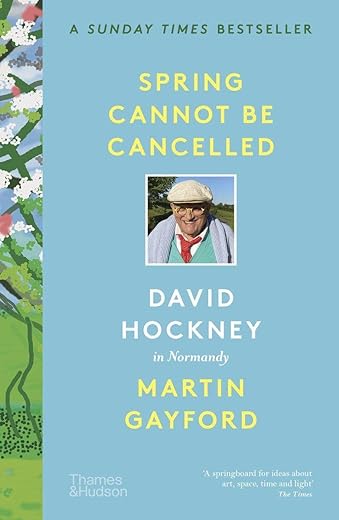
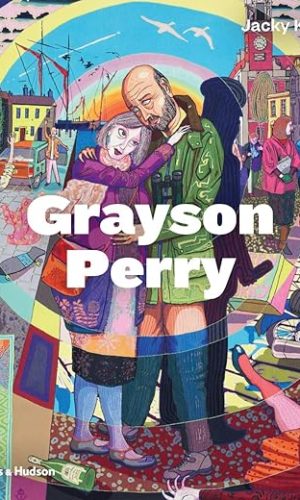

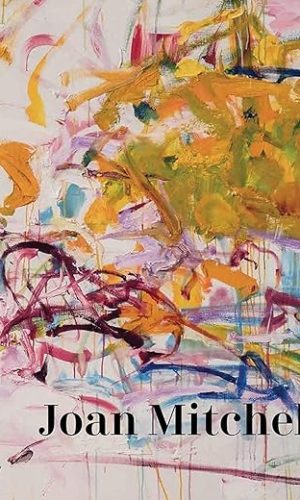
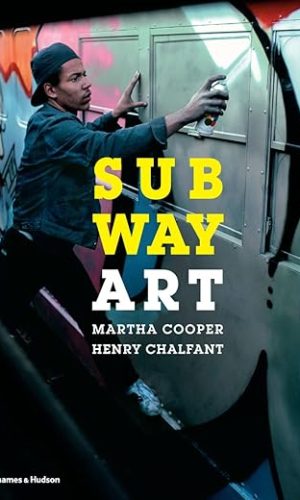
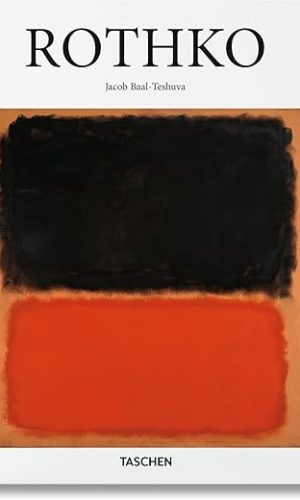
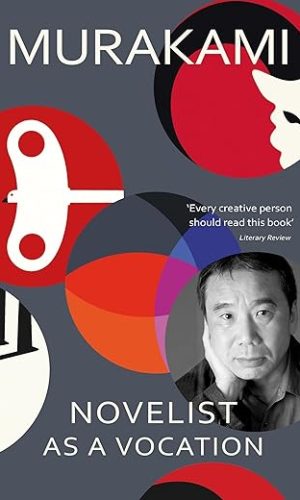
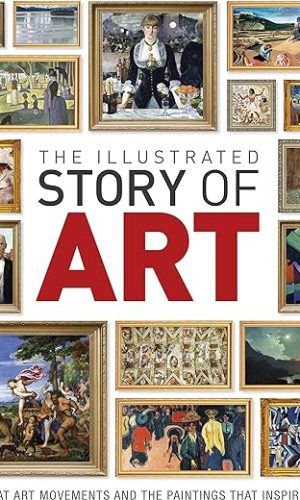
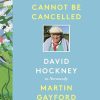
by Loverofbooks
Loved this so much. Infectiously enthusiastic and insightful. I’ve recommended it to everyone I know.
by The Reading Room
Hockney is as enthusiastic as a child in a sweetshop…he sees wonderful possibilities everywhere – 5 Stars
Author, Martin Gayford, and artist, David Hockney, have known each other for many years, and my goodness it shows! The sense of a lasting friendship and mutual trust shines through every page of this delightful book, and whether you’re a scholar of art history, an amateur artist, or simply someone who just finds Hockney’s work uplifting and a pleasure to look at, there is something here for everyone.
Presented almost as a series of conversations, the book draws on communications shared between Gayford and Hockney to reveal the story behind the artist’s project to capture spring in Normandy. From the dual viewpoint in Hobbema’s ‘The Avenue at Middelharnis’ to a Warhol film still, Hockney’s enthusiasm for questioning and learning seems to know no bounds. The great delight here is the way Hockney’s observations inform his own creations and the way this fascinating process is revealed to the reader.
From Hockney’s decision to purchase a property in France and culminating in the tantalising prospect that there just might be other seasons to follow, ‘Spring Cannot be Cancelled’ is a celebration of art, the artist, and of the joy of nature. Lavishly illustrated and meticulously explained throughout, this is a book that’s far more than simply beautiful to look at, it coaxes and nurtures the artist in us all.
Overall: Beautifully illustrated and extremely readable. If you buy just one art related book this year, then I’d have no hesitation in recommending this one.
by The Reading Room
I am a self-confessed fan of Hockney’s work and have been for years. Whilst I have a few Exhibition Catalogues and have read Volumes One and Two of Christopher Simon Sykes biography, I did wonder how I would manage an artist and critic’s Diary/Dialogue, albeit mostly emails due to the Coronavirus Pandemic, but I needn’t have worried – it’s absolutely fascinating.
Picture the scene – David Hockney has just moved to Normandy and has become fascinated, not for the first time, with the change of nature across the seasons. (Remember that Exhibition at the Royal Academy with all the trees!)
What begins as a dialogue about how the artist is settling down to his new house in Normandy becomes, and largely because of the Lockdown, an exploration of the colours and shades of the Spring colours in Normandy. Although his descriptions are brief and to the point, Hockney describes what he sees and also how he transfers that onto an iPad, paper or canvas.
The illustrations are rich in colour and easily recognisable as Hockney and yet they are refreshingly new and different.
Sunrise’s to sunsets, night scenes to moonlight pastures, winter-ending trees to Springtime Blossom – Hockney displays all the changes of Spring in Normandy.
If you like Hockney then you will love this book. If you are an artist then this book has an important tutelage value for you. If you just want an insight into Hockney’s work then this book is absolutely fascinating.
by utopian hermit
I think this is rather poor fare, all things considered.
First, don’t expect a book by David Hockney, as suggested by the billing and dust-jacket. It is not by David Hockney, it is by Martin Gayford. It contains a fair amount (about 10%) of Hockney rambling along interestingly and didactically, as he does, and the rest is other halves of the dialogue from Martin Gayford, and Gayford’s sometimes interesting, sometimes banal, often embarrassingly sycophantic commentary, which seems to run out of things to say in the final chapters. Oh yes, and lots of reproductions of the pictures Hockney produces of his Normandy garden on his i-Pad, as well as pictures from the history of art relevant to what Hockney is doing or talking about, quite well chosen and reproduced within the limitations of a book like this.
I have to own up to being a big fan of Hockney’s drawing and painting over the years, and also his didacticism about processes in painting and drawing. I don’t find the i-pad ‘Brush’ images pleasant to look at. I can sort of appreciate how they fit into Hockney’s obsession with paintings and photographs as representations, and how he manages to combine the fact of having to make deliberate and personal marks for his images, while at the same time being able to achieve something of the speed of photography, and all the advantages of that. All very interesting, but the marks (and Hockney is big on ‘marks’ made by the artist, and goes on about it quite a lot in this book) in his i-Pad ‘Brushes’ program seem to me clumsy, uniform and childlike; and the colours are to me really unattractive and horribly unlike the natural hues Hockney claims to be looking at. I can, and often have, appreciated that there is pink in the colour of a road surface, but does one need Hockney to pull out the gaudiest shades of pink from ‘Brush’s’ palette to prove the point? Well, maybe he does, to ram home his intellectual point, but not to make anything that speaks of roads and colour at the same time, while at the same time being beautiful or stimulating to the imagination.
Before I get on to Gayford himself and the publishers, I’d just like to mention the elephant in the room regarding this book and that is the difference between colour by the addition of light (which you get on the i-pad screen) and colour by the subtraction of light (which you get in painting and photographic reproduction. As far as I know what you see is not what you get between screen and printed paper. Yet Hockney is happy to produce images on the screen, and then have the public look at print-outs of these images as the artistic product.
As for Gayford, and the publishers, Thames and Hudson, maybe it is to be expected that, sitting at the master’s knee, Gayford tends to be a bit sycophantic. I’m not saying I wouldn’t be the same, probably worse, if I ever got to speak to Hockney, but it reminded my of the hapless followers of Brian in in Monty Python’s ‘Life of Brian’ (the shoe scene). For example,
DH: “When you think of it, the sun is the furthest prominent thing that we can see: it’s a good few million miles away. So we’re seeing all this distance. Photographs can’t capture that.”
Author: This is a characteristic thought of Hockney’s; apparently simple and straightforward, yet unlikely to occur to anyone else. (p143-4).
The book contains some unfortunate wording, such as “Through the process of photosynthesis they (plants) use the warmth of the sun to transform carbon dioxide and water into oxygen.” (p153). Better put that it is the sun’s energy, and it combines carbon dioxide and water into carbohydrates and consequently energy. Oxygen is a bi-product of this process.
Sometimes the text is just wrong, as in, “A blue moon means an unusual one, in this case a second full one in a single moon.” (p.265). What on earth does this mean? Two moons? It’s two full moons appearing in the same calendar month. Given that the lunar cycle is 28 days and calendar months are mostly 31 or 30 days, it’s not that uncommon. Even if Gayford doesn’t know this, doesn’t Thames and Hudson employ editors? They tend to know this sort of thing.
And a bit of annoying grammatical infelicity here and there, such as “a room ten foot square”. Again, doesn’t Thames and Hudson employ editors and proof readers? Is Gayford too important to be edited, is the book produced in too much of a rush, or is it just the Covid lock-down … who knows. It seems Hockney may have escaped it, but readers of this book and its publishers haven’t.
So … nice Hockney ramblings, rather a lot of enthusiasm, lots of padding, running out of things to say by the end, and lots of examples of Hockney’s new i-pad works and why he likes to do them.